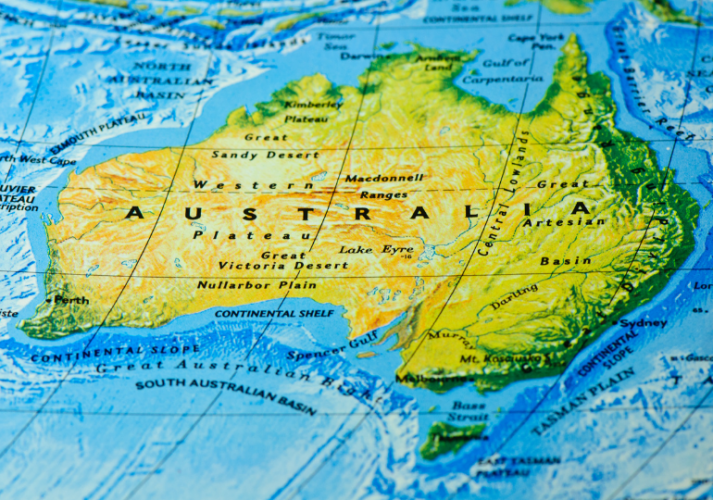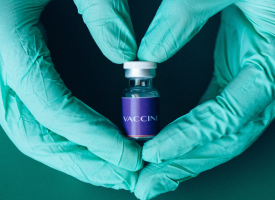Dr Omar Khorshid - International borders and COVID-19 vaccine rollout

Subject: COVID-19 vaccine rollout and International borders
PATRICIA KARVELAS: The President of the Australian Medical Association is echoing calls for the Australian Government to set a firm date to re-open international borders. Dr Omar Khorshid said providing an exact timeline will help motivate Australians to get vaccinated. I spoke to Dr Khorshid a short time ago and started by asking him if concerns about the vaccine rollout in the disability sector are fair.
OMAR KHORSHID: I can completely understand why people living with disabilities and in particular, in those residential facilities, would be very concerned about the time it's taking to get the vaccine out to them. But to be a little reassuring, the main risk factor for a bad outcome from COVID is actually age. It's by far and away the biggest issue and therefore, our priority has been the residents of aged care facilities. But of course, we need to finish this job of everyone in Phase 1B as quickly as possible.
PATRICIA KARVELAS: Should it be mandatory for those working in the sector to be vaccinated?
OMAR KHORSHID: We think that anyone working in high-risk scenarios, so either high-risk of contracting COVID or giving it to people who are vulnerable, there's a strong argument that people working in those sectors should be vaccinated. And whilst we don't support mandatory vaccination, there may well be a situation where workers are moved into non-patient facing roles in order to reduce that risk to the vulnerable in the community.
PATRICIA KARVELAS: In terms of repatriation flights from India, are you concerned the company Qantas is using to conduct COVID-19 tests have been discredited?
OMAR KHORSHID: Look, we've certainly seen those media reports with some alarm today. And it is obviously very difficult for Australia to be certain of the quality of testing regimes when we're organising tests in another country. And that's why we still need these quarantine facilities, we still need all the staff on the Qantas planes to be vaccinated and for every step to be taken right along the way to protect us from the virus getting in from overseas.
PATRICIA KARVELAS: We know that 70 Australians were bumped off that first flight from New Delhi to Darwin on Friday, seven of those who initially tested positive returned a negative test within days. And now we have someone from that flight who has tested positive in Howard Springs. What do you think's going on here?
OMAR KHORSHID: Well, the reality is that all these tests are only as good as the arrangements in which they're done. So, people can certainly test positive after a correct negative test. That's entirely expected and the systems are set up acknowledging that. The rapid antigen tests that were used on these passengers just before they boarded are also known to have false positives. And so, it's not at all surprising that some have subsequently tested negative with a more accurate test.
This, unfortunately, goes along with the territory. And underlying it is the reality that Howard Springs can't take too many positive patients, too many people with COVID because the Northern Territory Government doesn't have the capacity to look after those people in hospital. So, it is a capacity constraint that we're going to have to live with until we can get more appropriate facilities set up in other states around the country.
PATRICIA KARVELAS: What should be the best practise in terms of screening passengers?
OMAR KHORSHID: Well, I think the steps that are being taken are pretty robust steps. Having a negative PCR test within 72 hours is the gold standard test but it does take a while. And then backing that up with the rapid antigen test just before boarding does give you the ability to pick up a few extra people that may have tested negative 72 hours earlier.
So, I certainly can't think of much else the Government could be doing. And remembering, of course, that all of these people are going into quarantine when they get back to Australia. We do need to have the capacity to bring ill Australians back in as well as healthy Australians.
And that's, I think, the core problem here with our quarantine system and why so many, including the state premiers and we've just heard Labor Party figures also are calling for purpose-built facilities to be constructed as soon as possible.
PATRICIA KARVELAS: What do you make of the comments by former deputy chief medical officer Nick Coatsworth who recently said that we shouldn't be using zero cases as the measure of COVID success?
OMAR KHORSHID: Well, we have been following effectively an elimination strategy right from the start, and all levels of government denied at the time, but that's exactly what has happened and it has been successful. I think we should acknowledge that. But we also need to be thinking, how are we going to get out of this? And we are in this bizarre little bubble at the moment in Australia. I think it's been called a bubble or a gilded cage, we're becoming complacent and people are thinking, well, I don't really need to get vaccinated because there's no COVID here. COVID is coming to Australia. It has to come. Now, whether it's through a breach of our quarantine or because we open the borders, it is coming. And I think a conversation around the parameters that we're going to be setting when the borders are going to open will help motivate Australians to say, yup, I'm going to go and get myself vaccinated because this virus is coming into Australia, be it at the end of this year or halfway through next year, whenever it is. And therefore, the step I need to take is go and get myself vaccinated.
PATRICIA KARVELAS: Dr Coatsworth says doctors should prepare the public for the next critical phase of the pandemic; that's the open international borders and the return of the virus in the community, what you were just referring to there. What does preparing the public look like? I know you're going to say get vaccinated, but more broadly, even if we are vaccinated, what do we know about how it would run and what kind of figures we might have even if people don't get as sick, which, of course, the vaccine promises?
OMAR KHORSHID: Well we don't know for sure what a COVID outbreak looks like in a fully vaccinated population because there aren't any fully vaccinated populations around the world as yet. But we will have the opportunity to observe what's happening in those countries that are well ahead of us like Israel, the UK and the US. So, we'll be able to, by the time we're opening our borders, set up the parameters that are needed.
The biggest issue that we have and the one I'm most worried about is actually our capacity to look after people who get sick. There will be some people who get sick, whether they haven't had the vaccine or they haven't had a great response to the vaccine, and they get sick and they turn up to our hospitals. And it's the hospital system that's already completely full, bursting at the seams with ambulances parked outside, in a circumstance where we have no flu and no COVID.
Now, when we open those borders, we're going to get both of those viruses. We're going to get the flu; we're going to get the new flu. We haven't had a flu season for a couple of years and we're going to get a bad flu season. Plus, we'll get a certain number of people who get sick from COVID. And we've got to make sure our system is ready to cope with that and our public understand that this is part of our pathway towards getting back to normal.
PATRICIA KARVELAS: And does the AMA have a position on when international borders should re-open? We know today, a couple of high-profile people, including the Virgin CEO, are saying that mid-2022 is just too late.
OMAR KHORSHID: It's certainly a long way away. But we will say it's going to be when it's safe to do so. And that means when we have an adequate proportion of the population vaccinated. But I do support setting a time because that's going to give us all the motivation to go out and get that vaccine. Whereas if it's some indeterminate point in the future when everyone's vaccinated, it really doesn't give that vaccination program the push it needs to make sure it's complete.
And look, if we can get those borders open by the end of the year, I think that would be a fantastic target and a good reason for us all to go and do the right thing.
PATRICIA KARVELAS: Just let me pick you up on that. You think we should try and get our international borders reopened by the end of this year?
OMAR KHORSHID: We should be able to get our population vaccinated by the end of the year. And funnily enough, our pivot towards the Pfizer vaccine may actually assist because the last 10 million people that we need to vaccinate, which is our healthy population, will be getting a vaccine that's given just three to six weeks apart, the two doses. So, it may actually speed things up and there's a really good chance we can get our population fully vaccinated by the end of the year. And once that's done, what else do we need to do to open up? You know, that's the conversation we need to be having right now so that both the population are used to the idea and our health system is ready to cope with whatever's needed.
The other thing we'll need is a quarantine system, because the chances are we will still have some variants out there that we're worried about. We may well need some form of quarantine. And again, we've got this period of time now to start the planning for long term purpose-built quarantine facilities.
PATRICIA KARVELAS: Okay. So, working towards a December deadline for reopening our international borders, you think is feasible, if we can ensure this vaccine rollout is successful?
OMAR KHORSHID: That's right. As long as we get the vaccines from overseas, from Pfizer, then it is not unreasonable that we could get the whole population done by the end of the year and be looking towards opening up by that stage. Of course, we do need to get those vaccines into arms as well, and that's where we need the whole Australian population to come with us on this journey.
PATRICIA KARVELAS: That's the president of the Australian Medical Association, Dr Omar Khorshid.



